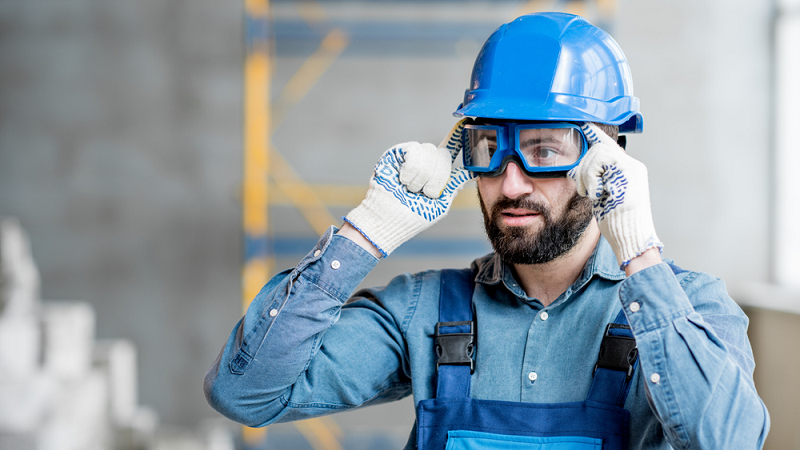Personal Protective Equipment (PPE) is the gear workers wear to keep safe from hazards. But who’s responsible for ensuring PPE is used and provided? Is it all on the employer or do employees have duties too?
This blog breaks it all down, using the guidance from The Personal Protective Equipment at Work Regulations 1992. Both employers and employees have vital roles to play in maintaining safety.
The Personal Protective Equipment at Work Regulations 1992
The Personal Protective Equipment at Work Regulations 1992 governs the use of PPE in the workplace. It clearly sets out what employers need to do to protect their workers from risks that cannot be controlled in other ways. If there’s a job that could expose workers to health and safety risks, PPE is necessary.
The idea behind the regulations is straightforward: employers must provide suitable PPE for their workers. But it doesn’t stop there. Employees have responsibilities, too. It’s not just a case of throwing on a helmet or gloves and getting on with the job. Both parties need to follow specific duties to ensure the equipment is used correctly and everyone stays safe.
The regulations cover a broad spectrum of industries, particularly those that involve hazardous conditions. Construction, manufacturing, healthcare—any sector where there’s potential for injury or health risks needs to pay attention to these rules.
Employer Duties Under PPE Regulations
The regulations are pretty clear about what’s expected from employers. The safety of their workers must be a top priority, and this means providing adequate PPE. Here are the essential duties employers have under The Personal Protective Equipment at Work Regulations 1992:
- Assess the Risks: Before selecting any PPE, employers must carry out a risk assessment. What hazards do employees face? How serious are these risks? This is crucial in determining the type of PPE needed.
- Provide the Right PPE: It’s not enough to give workers an old helmet or pair of gloves. PPE must be suitable for the specific risks and fit correctly. It should offer the right level of protection without creating more risks.
- Ensure PPE is Available: Employers are responsible for supplying all the necessary PPE at no cost to the employees. No cutting corners! If there’s a risk that requires protection, the employer must provide the gear.
- Maintain the PPE: PPE wears out over time and damaged gear can be dangerous. Employers have to ensure that PPE is kept in good working condition, regularly checked and replaced if necessary.
- Provide Training: Workers need to know how to use their PPE properly. Employers must provide training on PPE Safety in industry to all employees who need to use PPE at work.
- Store PPE Correctly: Employers must provide appropriate storage for PPE when it’s not being used. This protects the equipment from damage and ensures it remains ready for use.
- Monitor PPE Usage: It’s one thing to provide PPE, but employers also need to ensure workers are using it correctly. Regular checks are essential to make sure safety measures are being followed.
- Consult with Employees: Involving employees in discussions about PPE can help identify problems and improve safety. Workers know the risks they face, so it makes sense to get their input on what works and what doesn’t.
- Provide Replacement PPE: If PPE gets lost, damaged or worn out, the employer must provide replacements promptly. There should be no delay in ensuring workers have what they need to stay safe.
- Keep Records: Employers should keep records of PPE distribution, maintenance checks and training sessions. Tracking safety measures helps ensure compliance with regulations and creates a safer work environment.
Employee Duties Under PPE Regulations
While employers bear the primary responsibility, employees are not exempt. Workers also have an essential role in maintaining their safety by properly using the provided personal protective equipment (PPE). Here are the important duties employees have under The Personal Protective Equipment at Work Regulations 1992:
- Use PPE Properly: Employees must wear the PPE provided when it’s needed. No excuses! It’s there to protect them, so it must be used in the right situations.
- Follow Training: Employees are expected to use their PPE according to the training they’ve received. Whether adjusting a helmet or fitting ear defenders, workers should follow the instructions they’ve been given.
- Report Defects: If an employee notices their PPE is damaged or faulty, they need to report it immediately. Using damaged gear can be more dangerous than not using any at all.
- Take Care of PPE: PPE is expensive and vital for safety. Employees should take good care of the equipment and avoid causing unnecessary damage. This helps ensure the gear remains effective for longer.
- Return PPE After Use: When PPE is no longer needed, employees should return it to the proper storage location. This keeps the equipment safe from damage and ensures it’s ready for subsequent use.
- Request Replacements: If PPE is lost or becomes unfit for use, employees must inform their employer and request a replacement. Delaying this can put them at risk.
- Cooperate with Employers: Safety is a team effort. Employees need to cooperate with their employers and follow the safety measures in place. This means wearing PPE even if it feels uncomfortable or inconvenient.
- Avoid Tampering with PPE: Employees must not modify or alter their PPE in any way. Customizing gear might make it less effective, putting the worker and others at risk.
- Attend Training: If an employer provides PPE training, employees must attend it. Skipping these sessions can lead to improper equipment use and greater risk.
- Report Safety Concerns: If employees feel that the PPE provided isn’t suitable for the job or the risks involved, they need to speak up. Reporting safety concerns can help prevent accidents before they happen.
Summary
Under The Personal Protective Equipment at Work Regulations 1992, both employers and employees have essential roles to play in ensuring safety on the job. Employers must provide the right equipment, train workers and keep PPE in good condition. Meanwhile, employees need to use the gear properly, report problems and follow safety procedures.
Proper use of protective gear can mean the difference between a safe workday and a severe injury. Both sides need to work together to make sure that every day on the job is a safe one.




